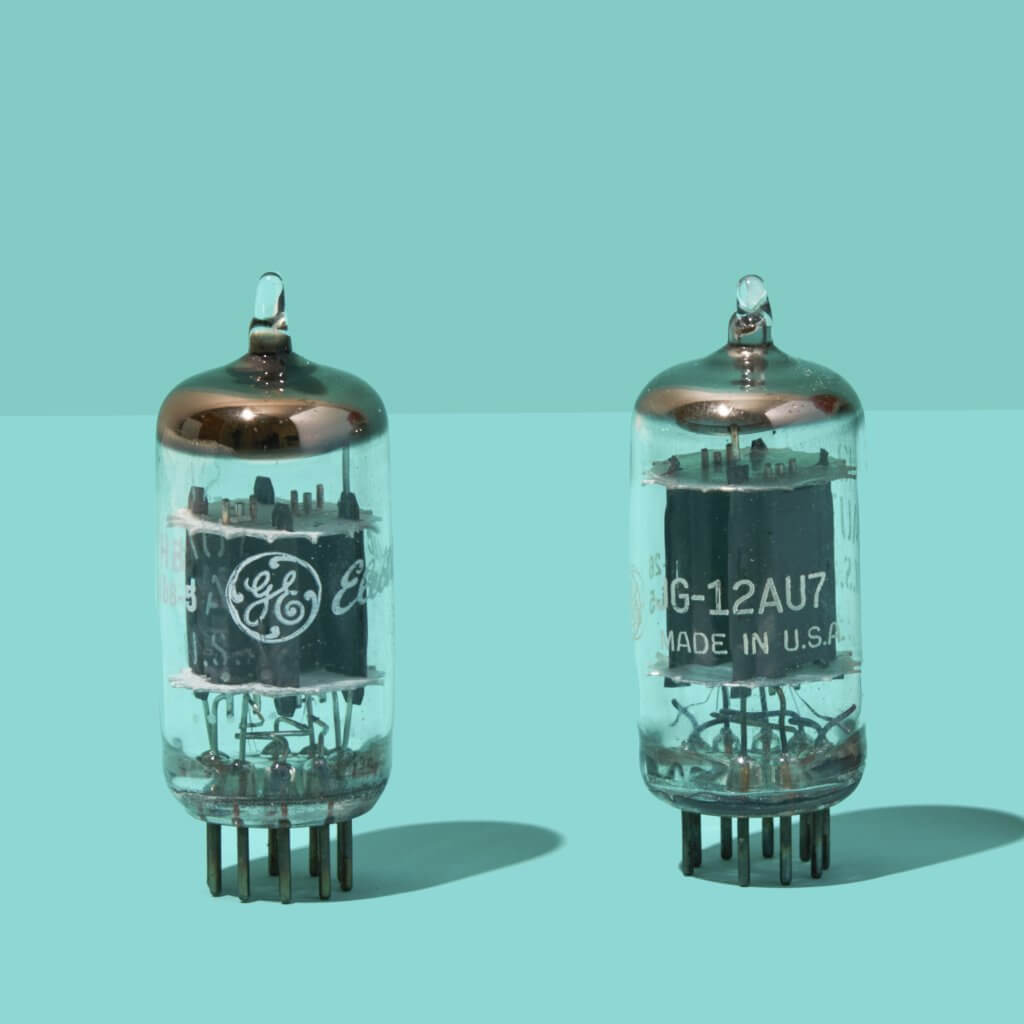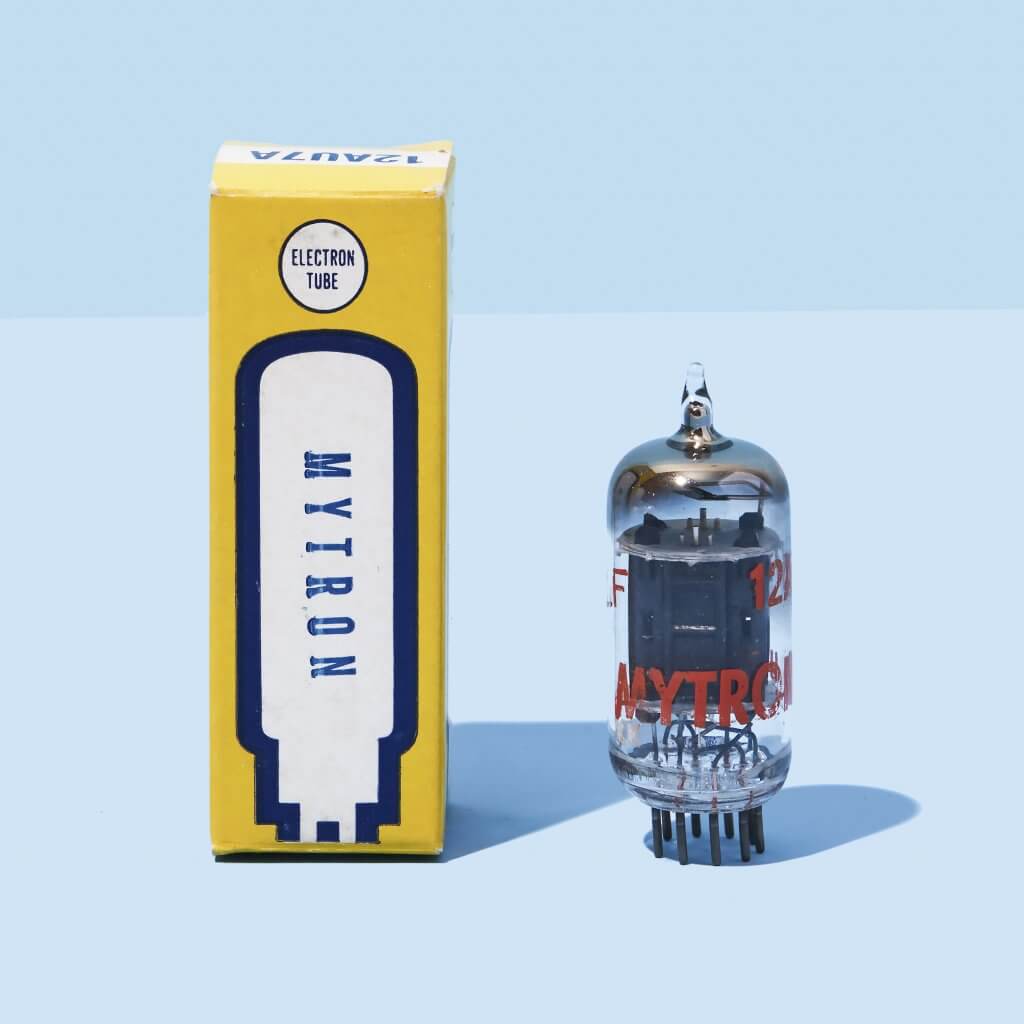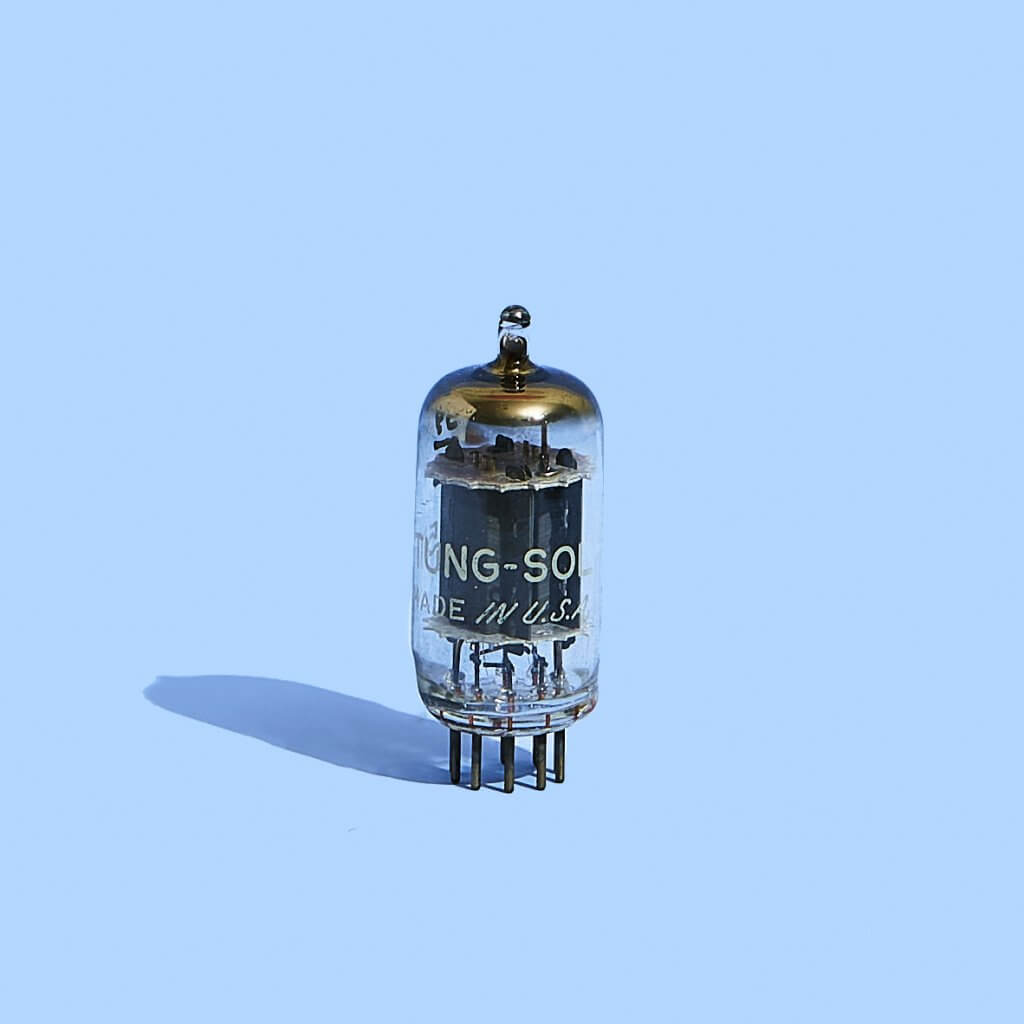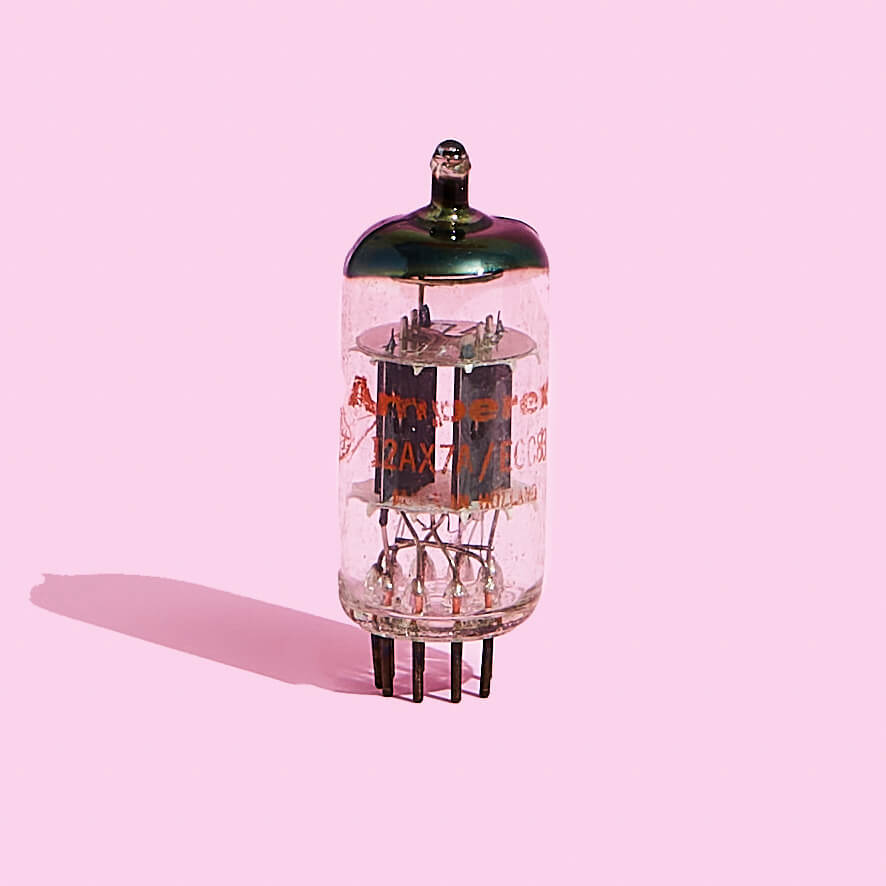Did you know? The type of “plate” in your vacuum tube can determine your amplifier’s tone and performance. Although it may seem like something to ignore, plates can govern things such as quietness, bass & treble range, longevity, and tonal quality. The type of plate can also reflect the era of manufacture. This cheat sheet covers what to expect with each type of plate, and it will help you determine which vacuum tubes are right for you.
The color of a vacuum tube’s plate can indicate both the tonal qualities of the tube and the year it was made. Generally speaking, compared to black-plate tubes, grey plates come with less noise, more treble and balance, more headroom (clean before breakup starts), less depth of tone, and a manufacture date after 1957 or 1958. Black plates, on average, have a slightly noisier idle, better low end, less headroom (they break up sooner), more depth of tone, and a manufacture date before 1960. We acknowledge that there are outliers to these generalizations.
Just as plate color provides a clue to a tube’s sound, so does plate length. Typically, when vacuum tube enthusiasts talk about plate length, they are referring to preamp tubes, especially 12AX7/ECC83 tubes.
Long plates are the older type of plate made between 1940 and 1965. They are slightly noisier, better in the low end, and come with less headroom than their short-plate siblings. If you are now saying, wait a minute, this sounds familiar, you are correct! Black plates are almost always long plates.
Short Plates are more recent, manufactured post 1960 and into the 70’s, are less noisy, are better in highs and balance, offer more headroom, and typically last longer than tubes with long plates. Along with greater longevity, short plates are less susceptible to microphonics and “tube rattle”. In fact, if you have a noisy amp or have issues with “tube rattle,” short plates are an excellent bet to combat the problem.


We recommend black plates for vintage tweed amps, as they were most commonly stock in amps from the 1950s. These are typically best for single-speaker amps. Remember, black plates are almost always long plates.
Tonal Qualities: Lots of low end (Bass), less headroom (breakup happens sooner), and higher tube noise (but still less than most modern tubes).
Best for: Blues, hard rock, rock & roll, fuzzzzzzz stuff, rock bass guitar, funk bass, and vocal mics to add depth and low end.

Tonal Qualities: Average headroom, average noise, great bass and treble, great clean and dirty sounds, and lots of depth of tone and bass (but less than black plates). More noise and less headroom than short plates. We consider the long grey plate, the “Goldilocks Tube,” to have qualities between long black plates and short grey plates. Typically this is our recommendation for single-speaker amps or for folks who are new to tubes!
Best for: Blues, rock, jazz, funk, classic rock, fuzz and pretty much anything!!!

Tonal Qualities: Added headroom (more clean before breakup), great high-end (treble), less depth of tone, better clean sound, less bass, nice and tight lows too, punchy, responsive, and least amount of noise. These are best for 2-8 speaker amplifiers like Twin Reverbs, Vox AC30, Marshall Plexi’s etc, and for sensitive audio applications.
Best for: Jazz, clean guitar, classic rock, punchy tight bass, jazz bass, audio, vocal mic and noise-sensitive devices.